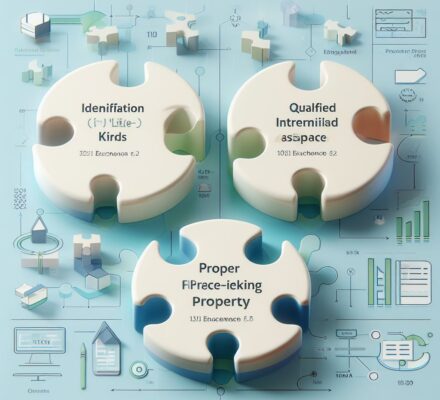Looking to maximize your tax benefits? Discover the power of the 1031 exchange basis. By understanding the ins and outs of this tax strategy, you can identify eligible properties, calculate potential benefits, and navigate the timelines and deadlines with ease.
In this article, we’ll provide you with essential tips to successfully execute a 1031 exchange. So, get ready to take control of your tax savings and make the most of this valuable opportunity.
Key Takeaways
- The 1031 exchange basis calculates gain or loss on property exchange and affects the amount of tax owed on the transaction.
- Reinvesting proceeds into like-kind property defers capital gains tax and allows for the acquisition of higher-value property.
- Identifying eligible properties for exchange involves determining investment criteria, conducting market research, analyzing factors such as market demand and property values, and engaging professionals for evaluation.
- Successfully executing a 1031 exchange requires working with a qualified intermediary, identifying suitable replacement properties, consulting with a tax professional, and following IRS regulations to maximize tax benefits.
Understanding the 1031 Exchange Basis
To fully understand the 1031 exchange basis, you need to know how it can maximize your tax benefits. The 1031 exchange basis refers to the value that’s used to calculate the gain or loss on the exchange of properties. When you sell a property and reinvest the proceeds into a like-kind property, you can defer the capital gains tax that would have been due on the sale. The basis of the new property is determined by taking the basis of the old property and adjusting it for any cash or mortgage used in the exchange.
The 1031 exchange basis is a critical concept because it directly affects the amount of tax you owe on the transaction. By deferring the capital gains tax, you can keep more money in your pocket and use it to acquire a higher-value property. This allows you to grow your real estate portfolio and increase your potential for future returns.
It is important to note that the 1031 exchange basis doesn’t eliminate the tax liability entirely. It merely postpones the tax payment until you sell the replacement property without completing a subsequent exchange. At that point, the capital gains tax will be due.
Understanding the 1031 exchange basis is essential when considering a like-kind exchange. By deferring your tax liability, you can maximize your tax benefits and potentially increase your overall wealth.
Identifying Eligible Properties for Exchange
You can identify eligible properties for exchange by conducting thorough research and analysis. Here are three key steps to help you in this process:
- Determine your investment criteria: Begin by defining your investment goals and criteria. Consider factors such as location, type of property, size, and potential return on investment. This will help you narrow down your search and focus on properties that align with your investment objectives.
- Conduct market research: Once you have defined your investment criteria, gather market data to assess the current trends and conditions. Analyze factors such as market demand, property values, rental rates, and vacancy rates. This information will provide insights into potential investment opportunities and help you identify properties that have the potential for growth and appreciation.
- Perform due diligence: Before finalizing your decision, conduct a thorough due diligence process on the identified properties. This includes reviewing financial statements, property inspections, lease agreements, and any other relevant documentation. Engaging the services of professionals such as real estate attorneys, appraisers, and inspectors can ensure a comprehensive evaluation of the properties.
Calculating the Tax Benefits of a 1031 Exchange
Calculate the tax benefits of a 1031 exchange by considering the potential savings in capital gains tax. This is an important step in understanding how much you can potentially save through a 1031 exchange. By deferring capital gains tax, you can keep more of your investment capital working for you in the new property. To help you visualize the potential savings, consider the following table:
| Sale Property | Replacement Property | |
|---|---|---|
| Purchase Price | $500,000 | $600,000 |
| Adjusted Basis | $300,000 | $400,000 |
| Capital Gains Tax | $200,000 | $200,000 |
In this example, if you were to sell your property for $500,000 and had an adjusted basis of $300,000, you would have a capital gain of $200,000. Without a 1031 exchange, you would have to pay capital gains tax on this amount. However, by utilizing a 1031 exchange and reinvesting the proceeds into a replacement property valued at $600,000 with an adjusted basis of $400,000, you can defer the capital gains tax and maximize your tax benefits.
Calculating the tax benefits of a 1031 exchange allows you to understand the potential savings and make informed decisions regarding your investment strategy. Now that you know how to calculate these benefits, let’s move on to navigating the timelines and deadlines of a 1031 exchange.
Navigating the Timelines and Deadlines of a 1031 Exchange
Once you have calculated the tax benefits of a 1031 exchange, it’s important to navigate the timelines and deadlines to ensure a smooth and successful exchange process. Here are three key points to keep in mind:
- Identification Period: After selling your investment property, you have 45 days to identify potential replacement properties. During this period, it’s crucial to thoroughly research and evaluate potential options to meet your investment goals. You must submit a written identification statement to a qualified intermediary or the seller of the replacement property before the 45-day deadline expires.
- Exchange Period: Once you have identified your replacement property, you have 180 days from the sale of your original property to complete the exchange. This period includes the 45-day identification period mentioned earlier. It’s important to work closely with your qualified intermediary to ensure all necessary paperwork and financial transactions are completed within this timeframe.
- Like-Kind Requirement: To qualify for a 1031 exchange, the properties involved must be of like-kind. This means that both the original property and the replacement property must be held for investment or used in a trade or business. Additionally, the replacement property must have an equal or greater value than the original property. It’s crucial to carefully consider these requirements when identifying and acquiring replacement properties.
Tips for Successfully Executing a 1031 Exchange
To successfully execute a 1031 exchange and maximize your tax benefits, it’s important to follow these tips.
First and foremost, it’s crucial to work with a qualified intermediary. This is a neutral third party who’ll facilitate the exchange process and ensure compliance with IRS regulations. They’ll help you navigate the complexities of the exchange, handle the necessary paperwork, and hold the proceeds from the sale of your relinquished property until you’re ready to purchase the replacement property.
Secondly, it’s essential to identify suitable replacement properties within 45 days of selling your relinquished property. This timeframe is non-negotiable and failure to identify within this period can jeopardize the entire exchange. To avoid this, it’s recommended to start searching for replacement properties well in advance.
Another important tip is to carefully consider the value of the replacement property. To fully defer your tax liability, it’s crucial that the replacement property is of equal or greater value than the relinquished property. Failing to meet this requirement will result in taxable gain.
Lastly, it’s advisable to consult with a tax professional who specializes in 1031 exchanges. They can provide valuable guidance and help you navigate through the intricacies of the exchange process, ensuring that you maximize your tax benefits and comply with all IRS regulations.
Frequently Asked Questions
Can I Use a 1031 Exchange to Defer Taxes on Personal Property, Such as a Second Home or Vacation Property?
Yes, you can use a 1031 exchange to defer taxes on personal property like a second home or vacation property. This allows you to reinvest the proceeds into another like-kind property and defer capital gains taxes.
Are There Any Restrictions on the Types of Properties That Can Be Exchanged Using a 1031 Exchange?
There are restrictions on the types of properties that can be exchanged using a 1031 exchange. Personal properties like second homes or vacation properties are generally not eligible, but investment properties like rental properties qualify.
How Does the Depreciation Recapture Rule Affect the Tax Benefits of a 1031 Exchange?
The depreciation recapture rule can impact the tax benefits of a 1031 exchange. This rule requires you to pay taxes on the depreciation you claimed on the property being exchanged, potentially reducing your overall tax savings.
Can I Use a 1031 Exchange to Acquire Multiple Replacement Properties?
Yes, you can use a 1031 exchange to acquire multiple replacement properties. This strategy allows you to defer taxes and maximize your investment potential, providing you with greater opportunities for growth and diversification.
Are There Any Limitations on the Amount of Time I Have to Identify and Acquire Replacement Properties in a 1031 Exchange?
There are no limitations on the amount of time you have to identify and acquire replacement properties in a 1031 exchange. This allows you to carefully consider and select the best options for maximizing your tax benefits.




